It's breeding bird season!
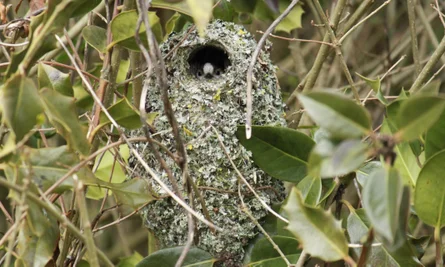
Long-tailed Tit nest (spot the bird!)
What’s all this then? Spring is in the air, plants are growing, and the earliest of our joyful wildflowers are coming into bloom on nature reserves around the estuary and across the commons. Ah lovely, now if someone could just tell the weather!
The official date for the beginning of Breeding Bird Season is 1st March – and from here on in, certain activities – such as trimming or cutting trees, bushes, hedges and rough vegetation – are now restricted where birds are nesting, so that active bird nests aren’t damaged or destroyed, and specific bird species, such as nightjar and Dartford warbler, aren’t disturbed.
Of course, birds aren’t interested in an ‘official date’ and we’ve already had reports of nesting activity from several of you! Fantastic!
Stars of the show: A number of our garden birds are early nesters, including long-tailed tits (pictured). These pink-hued fluff-balls start building their elaborate and intricate nests from February, taking up to three weeks to construct them. They can use moss, cobwebs and lichens, and line them with feathers in order to stay cosy.
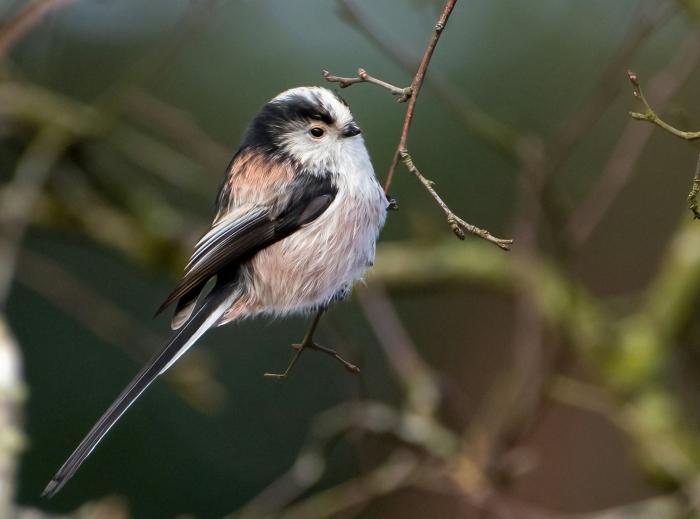
Long-tailed Tit (when not hiding in nest!)
Up on the Pebblebed Heaths National Nature Reserve (NNR), several of our protected species take a much more relaxed approach to nest building. Both Dartford Warblers and Nightjar nest on the ground (heathland not usually being a habitat abundant in trees) with Nightjar in particular, creating ‘scrapes’ – an area from which they remove debris to expose bare ground – rather than constructing the more typical nest that we imagine chicks cheeping from.
Nightjar rely on the cryptic camouflage of their eggs and young to keep them hidden amongst the gorse and heather. Once much more widely distributed than is the case now, Nightjar have declined along with their preferred habitat of lowland heath. On the Pebblebeds, we are proud to support around 80 territories of this RSPB Amber List species. Listen out for them from May when they return from their wintering grounds in sub-Saharan Africa to breed here on the commons.
Dartford Warblers, on the other hand, are resident – you can see them right across the heaths, all year round. This usually shy and skulking bird is much more brazen, during breeding season and can be spotted singing from the tips of gorse or flitting between tufts of heather. Listen first for their scratchy call, it’s often the only way you’d know they were there.
There are around 200 Dartford Warbler territories across the commons - numbers continue to recover after the cold winter of 2018 caused concerning declines. The Pebblebed Heaths NNR sits at the most northern extent of this charming bird’s range and extended periods of cold weather can lead to severe population declines. Luckily, on a good year, when the weather behaves and there is plentiful food, Darties can lay up to three clutches of eggs during a season.
How can we help? Ground nesting under heather, often close to paths, both ‘Darties’ and Nightjar are vulnerable to disturbance by us and our canine companions. We can help by sticking to the path and not venturing cross-country through the gorse or heather, and by keeping our dogs close and under control – paws on paths!
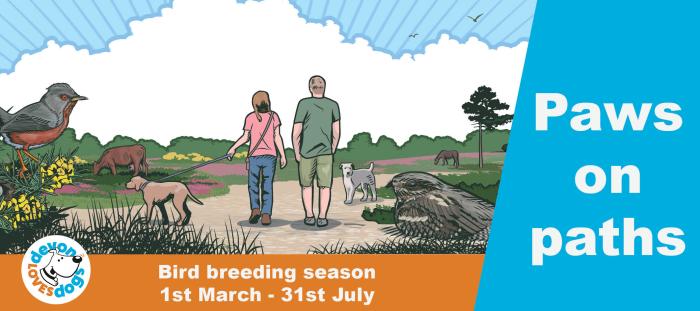
Disturbance by off-path dogs and humans can cause parent birds to abandon the nest, leaving eggs or chicks exposed to the cold and predators. Nesting on the ground also means they are more susceptible to being trodden on! Both these species are on the UK Amber list and are Schedule 1 birds on the Wildlife and Countryside Act 1981, so a little extra regard could go a long way to supporting populations.
Thanks for being considerate when visiting, and for giving wildlife the space it needs to survive.
Otter Estuary wetland awarded National Nature Reserve status
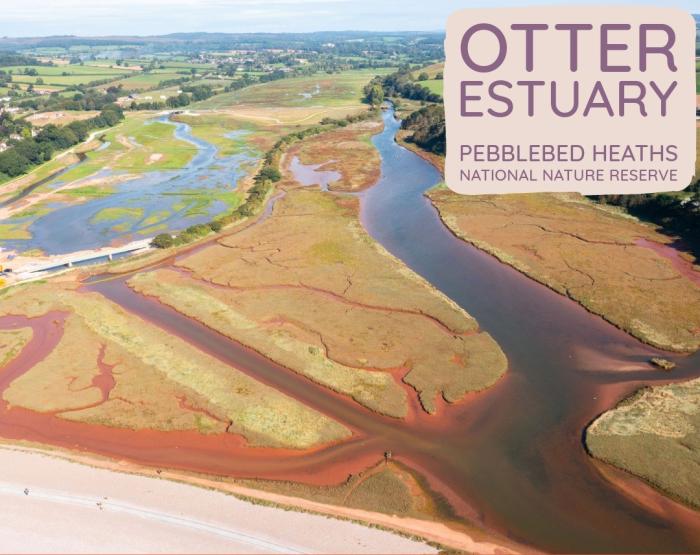
The Otter Estuary and Pebblebed Heaths "Super" National Nature Reserve!
February saw us join our project partners, Clinton Devon Estates & The Pebblebed Heaths Conservation Trust, to celebrate the fabulous success of the Lower Otter Restoration Project – now recognised as the Otter Estuary National Nature Reserve!
This newly restored local wetland was awarded nature reserve status as part of the ‘King’s Series’, which will see five major National Nature Reserves (NNRs) named every year for the next five years, celebrating the Coronation of His Majesty King Charles III.
The designation of the Otter adds almost 90 hectares of wetland habitat to the East Devon Pebblebed Heath NNR. We can’t wait to see how the site continues to develop and evolve over time. There were already Avocet feeding when we visited last month - maybe this newly appointed NNR will emulate the success of Seaton Wetlands as a breeding location sometime in the not so distant future?
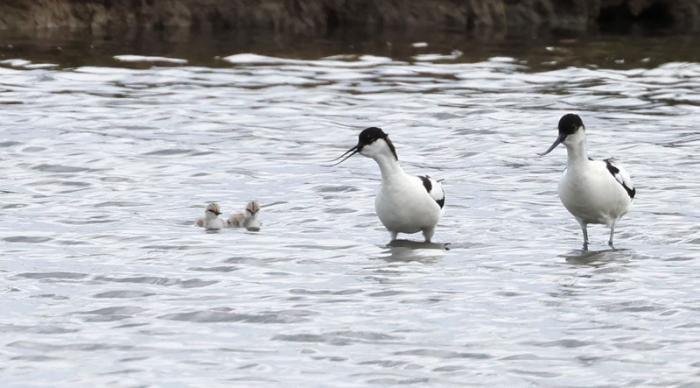
Avocet with chicks (image by Sue Smith)
What is certain is that the Otter Estuary will provide valuable benefit and additional habitat to many of the overwintering water bird species we see in the Exe Estuary Special Protection Area (SPA) – and as you all know we are big fans of creating space for nature.
A heathland update from the RSPB...
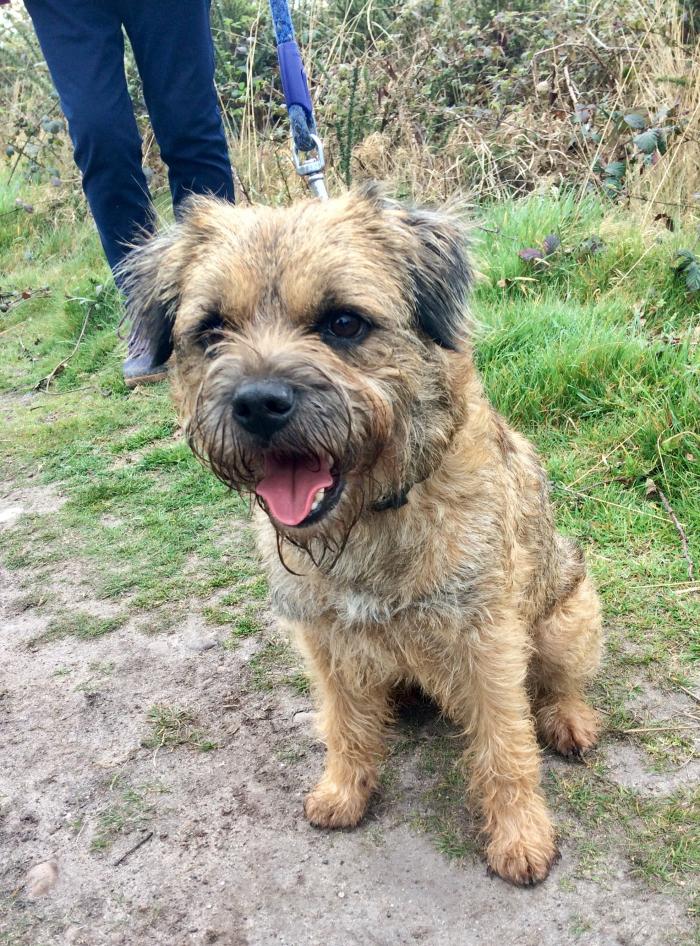
"Good boy, George" on a lead!
Hello from Aylesbeare, hope everyone has been keeping up with all the weather February has thrown at us. It’s been non-stop here, trying to clear as much encroaching scrub as possible before the start of the nesting season, whilst also keeping up with the storms and maintaining the fence line so our ponies don’t go adventuring. They are hard at work munching away unwanted vegetation, so be sure not to distract or disturb them if you’re luckily enough to spy a few on the common!
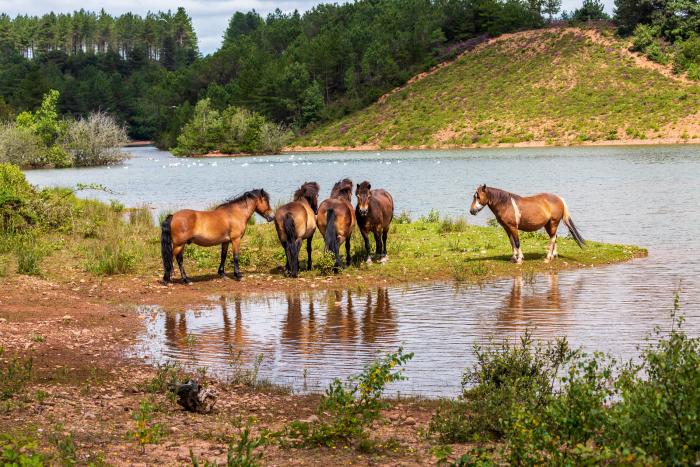
Ponies on the heaths.
This month we thought we’d focus on a site we manage called Fire Beacon Hill. Slightly further afield, overlooking Sidmouth, it is well worth a visit just for the vista; it enjoys breathtaking views of Sidmouth and the sea, over towards Mutter’s Moor and Harpford Wood, and even as far as Aylesbeare Common!
Fire Beacon Hill has a fascinating history and prehistory; its name comes from its use as a beacon from possibly up to a thousand years ago, and it was part of the chain of beacons that warned of the coming of the Spanish Armada in 1588.
View from White Cross at Fire Beacon Hill towards Ottery St Mary.
Underfoot, its geology is also quite unique. As you walk up the steep hill that leads to Fire Beacon, the stones and pebbles that are characteristic of most of the local area here are replaced by flint instead. This is part of a clay-and-flint deposit, underneath which is a deposit of calcareous Greensand, a type of sandstone. It’s these layers that form the distinctive ridge that make the reserve such a trek to get to, and also mean the soil is more alkaline, as opposed to traditional heath soils that are more acidic.
Fire Beacon Hill is an excellent example of how collaborations between organisations to protect local habitats are becoming more the norm. The site is owned by Sidmouth Town Council, but has been managed by us since 1994. More recently, we have been involved with the management of Core Hill, just over the Saxon bank, which is owned by the Woodland Trust, and the Forestry Commission land that is to the north and east of the site.
This year is the first where we have been able to graze cattle over all this area, thanks to our new "NoFence" collars. As you will know if you’ve seen the signs around Fire Beacon, this technology applies a virtual fence around an area, controlled via an app. Not only does this reduce our workload, it also allows us to graze more difficult sites like this – because there is no fence to keep them in on Fire Beacon Hill. A much larger area – notably including woodland grazing now - is reaping the benefits of our cattle.
We’d like to talk a bit about dog walking up on the site. Unfortunately we have had a couple of incidents recently involving dogs chasing the cattle, which is distressing for them and can cause the cows to run off and escape the invisible boundary.
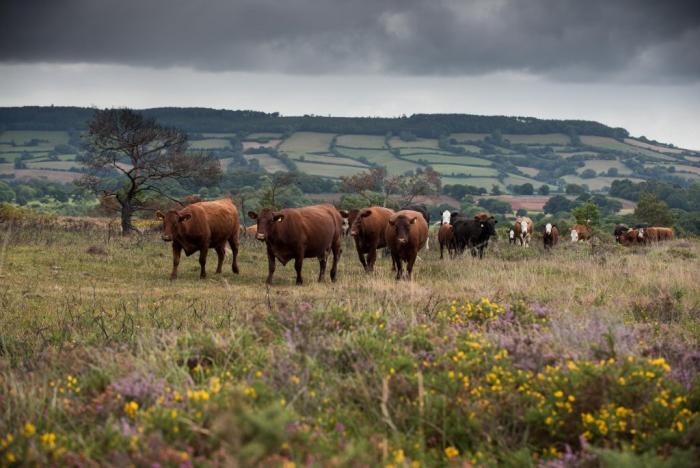
Cattle grazing on the heaths (image by Pebblebed Heaths Conservation Trust).
This means the cattle owner has to find and bring them back. (checking their location on the NoFence app) One evening, our farmer had to walk one of the cows back up through the lanes all the way from a residential area in Sidford. Farmers are always busy and having to take time to do this is very inconvenient, especially when it might have been avoided if these dogs had been under control.
We ask, please could all dog walkers be mindful of the presence of cattle on the open heath and in the woodland, and if you know your dog may wander or chase, keep it on a lead. This will help us support both the valuable conservation grazing and open access of the site, which so many people have such a strong connection to.
Additionally, as we enter the breeding bird season please remember that dogs should be kept on leads from 1st March – 31st July, to reduce disturbance to both livestock and wildlife. Fire Beacon Hill is a lovely site, and rules such as this only exist to help keep it that way for everyone!
As the signs of Spring start to appear, I do really recommend taking the time to visit. Enjoy the view, perhaps with a flask, and remember some of our rarest species call these sites home, so please treat it with the same care as you would your own home.
Alice, RSPB Residential Volunteer
A beginners guide to birdwatching.
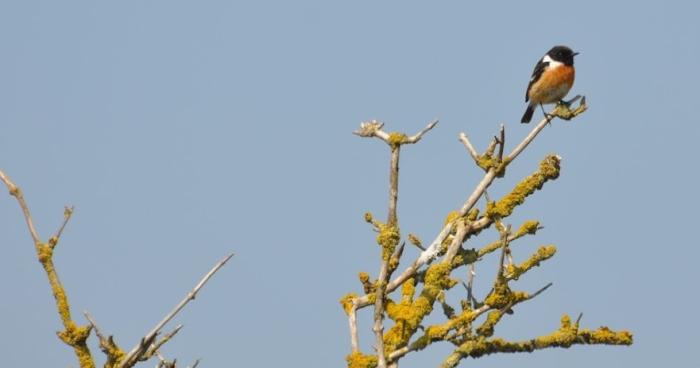
A male Stonechat perched on Elder.
When you first start, birdwatching can feel a bit overwhelming as there’s more than 600 species of bird in the UK, plus a few extra migrants, however its worth looking at the type of birds that you get in different habitats. For instance, in parks and gardens, birds you’re likely to see such as Blackbirds, Magpies and Wood Pigeons feed on short grass lawns, and small birds such as Blue Tits and House Sparrows are often found in trees and bushes.
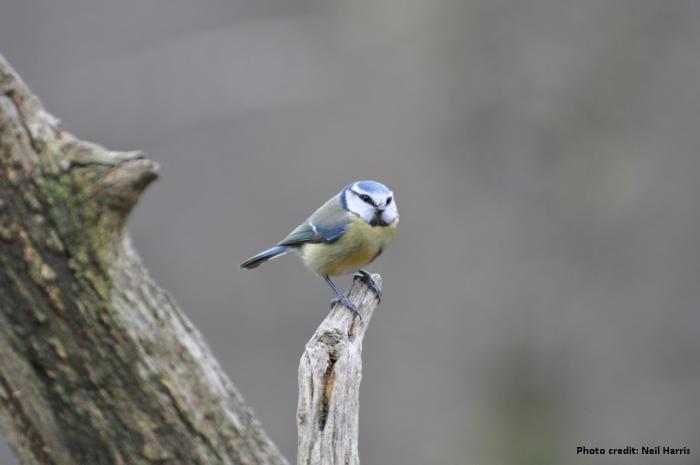
A Blue Tit perched on a branch.
Probably the easiest way to get started bird watching is to take time to have a look in your garden or a nearby green space, there will be birds around, but you may not see them straight away. The key to increasing your chances of seeing as many different bird species as possible, is to stay as quiet as possible and move slowly and carefully if you want them to stick around.
Spring in some ways can be a bit of a tricky time to start bird watching, the trees are coming into leaf so it can be a little more difficult to see birds. However, spring is when birds are at their loudest and their brightest as they jostle to attract mates ready for breeding season. Some birds, such as the stonechat sings melodic songs whilst weaving around in the air in sweeping arcs. If the female likes what she hears, she will fly into the air and begin to sing with him. Male robins bring food to the female to show he can provide for her and any chicks she may have.
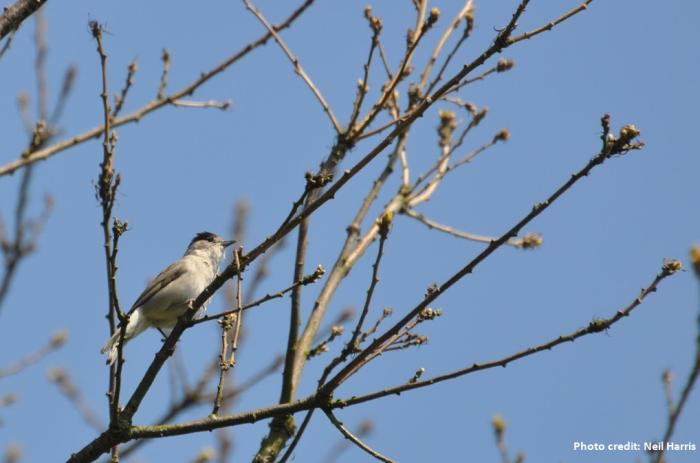
"The King of the Warblers", a male Blackcap sings from this cherry tree.
Not only can you spend time identifying different bird species and learning about their behaviours, but you can also spot family dynamics, see chicks grow up, and watch as migratory birds fly thousands of miles back and forth to other parts of the world throughout the year.
Plus, birdwatching is a fascinating, flexible activity that can encourage mindfulness – and you can get started for free in the comfort of your own home.
You can also feed birds to bring them closer to you, and there are numerous bird foods available to buy or you could put out food from the kitchen such as apples or dried fruit, just make sure that apples are cut into small pieces and dried fruit is soaked in water so it doesn’t swell in a birds stomach. Even if you don’t have a garden, there are bird feeders that you can attach to a window so you can see birds close up and personal!
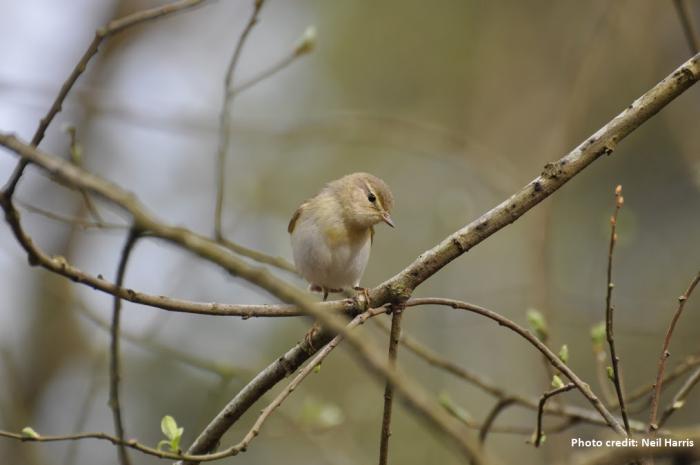
An inquisitive Chiffchaff! This bird lets you know its name by singing it to you!
While you can enjoy birdwatching without any equipment whatsoever, it’s still worth having a look at a few different types of binoculars – as they could have the potential to enhance your experience. The RSPB shop at Darts Farm, can provide helpful advice on what type of binoculars you might want to buy as there is a vast range of different types and prices!
Once you start observing birds and seeing how they are different, whether that’s brightly coloured feathers, the size of their bodies, how they move or their calls, a bird book and/or app helps to learn a bit more about the bird that you’re seeing/hearing. Books such as RSPB What’s that bird include detailed descriptions and images of birds that you might come across in the UK, as well as information about their habitat and other birds that they’re commonly confused with. It’s also pocket-sized, making it convenient to carry with you when you’re out and about. A popular app and one that the wildlife wardens also use is Merlin, it records the bird song onto your phone and can then tell you what it is, amazing!
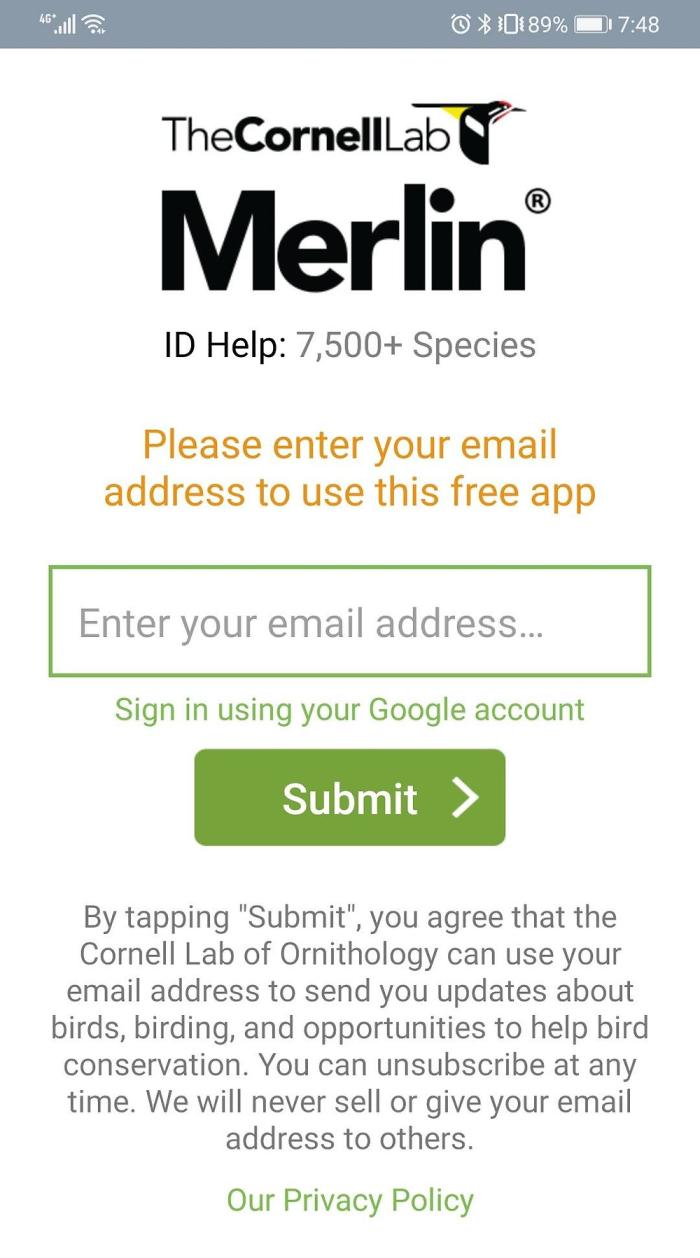
A screenshot of the "Merlin" app, courtesy of The Cornell Lab.
Finally, you can share your observations with other bird watchers and contribute to citizen science projects, there are several online platforms such as eBird or the RSPB Garden Count. You can also join local bird watching groups such as Devon Birds and share your observations with other members. What are you waiting for??
Getting out & about on the Exe Estuary
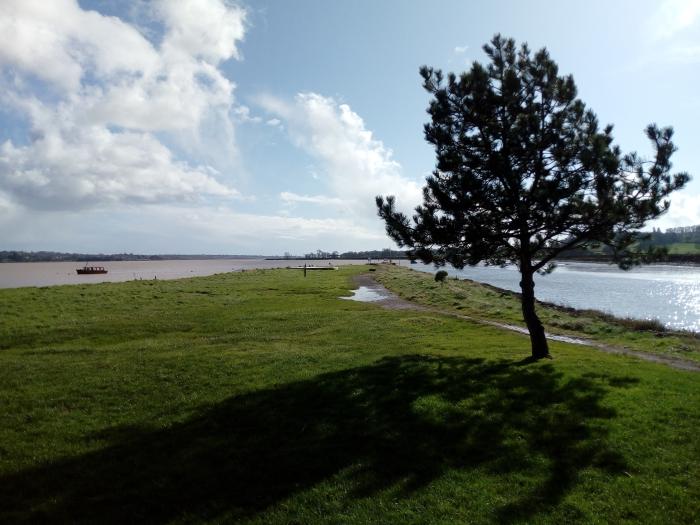
A view of the Exe Estuary.
Looking for somewhere to take the family over the weekend? How about the Exe Estuary trail? The whole trail is 16.5km long, fully accessible, level and almost entirely traffic free.
The trail extends from Exmouth, up the Exe to Exeter and then down to Dawlish. This may sound a little long to walk off your roast dinner, although you can hire bikes from Exeter.
There are also several places around the estuary that can be explored on foot with shorter sections of the trail taking in pretty villages, bird reserves and beaches.
Topsham is a very pretty village to explore and at its southern end is Bowling Green Marsh, managed by the RSPB. This is the main high tide roost for the northern extent of the estuary. From the hide you can see high numbers of distinctive widgeon, dainty black and white avocets and fancy lapwing with their splendid head crests.
The Old Sludge beds on the other side of the river from Topsham, are managed by Devon Wildlife Trust and comprise a series of small ponds and reedbeds connected by boardwalks and paths, with benches where birds can be observed flitting about in the undergrowth or stalking through the mud.
Exminster Marshes which is also managed by the RSPB is an area of wet grassland drained by ditches and is an important breeding ground for redshanks and ducks such as Shoveler and Teal. In the spring, the marshes also provide feeding and roosting areas for waders such as the curved bill curlews and sociable Dark-bellied Brent Geese.
You can go out onto the towpath and head south towards the Turf Locks pub, which has uninterrupted panoramic views of the estuary and where you can quite often see resting birds such as Lapwing and Dunlin. You can (check its running though as it is seasonal) catch a ferry across the river to Topsham for a wonderful circular walk!
"Sign blindness" - a curious phenomenon!
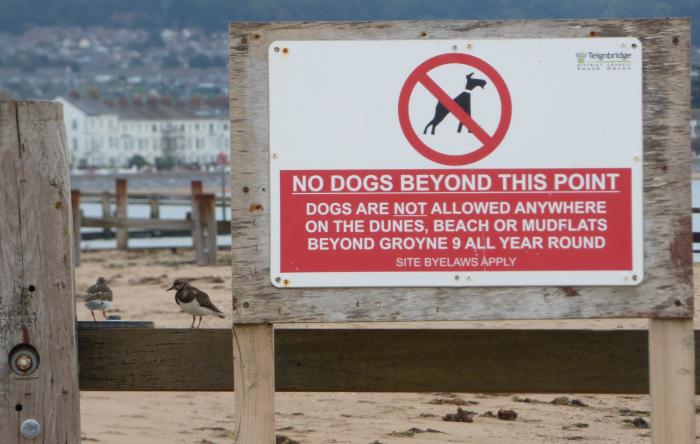
Have YOU seen this sign at Groyne 9, Dawlish Warren?!
We’re all guilty of ignoring signs sometimes, how often have you driven past a ‘Road Closed’ sign or ignored a ‘No dogs’ sign? Sometimes we don’t even see or register these signs at all.
It turns out this is a real cultural phenomenon called ‘Sign Blindness’, signs that we encounter over and over again at places that we regularly go to, eventually just fail to register even if they explain why there’s no dogs or why the road is closed. In other words, we become ‘blind to them’. As well as familiarity, signs can lose impact when there’s too many of them in one place, known as ‘cluster blindness’.
When we’re confronted with so much information, our brains can only perceive some of the information presented to us and if we’re focussing on a specific task were less likely to notice an unexpected object even if it falls within our gaze, known as ‘inattentional blindness’. Perhaps unsurprisingly our brains are primed to pick out and focus on things that are relevant to us. We’re also more likely to notice faces than objects, if they occur unexpectedly in a scene.
Feeling overloaded with information causes a stress-response, which in turn can affect cognition and behaviour. If signage is complex and cluttered, we are more likely to just ignore all the signage than to pay attention.
SEDWildlife is well aware of the sign blindness and we try to communicate in as many different ways as possible, the information about the three sites that we work on and their rules. At Dawlish Warren, there are temporary , seasonal banners that go up in the summer reminding people that there are no barbecues or fires allowed on the beach or in the dunes, these signs are installed in areas where there aren’t any other signs (to avoid cluster blindness), they have limited text with the majority being pictures to avoid overloading people (inattentional blindness) and to make the information as clear as possible.
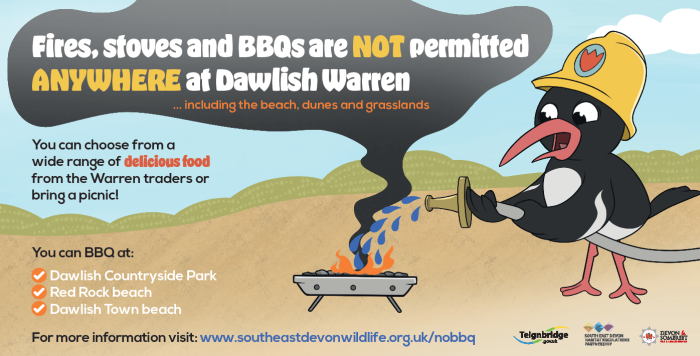
Our "No BBQs at Dawlish Warren" sign.
At the Pebblebed Heaths, we have trialled glow in the dark signs reminding people to pick up after their dogs on dark evenings, and we are also adding temporary seasonal signs to the car parks about the bird breeding season and the requirement to ensure dogs are on lead/close control so that they don’t disturb vulnerable ground nesting birds (also inattentional blindness).
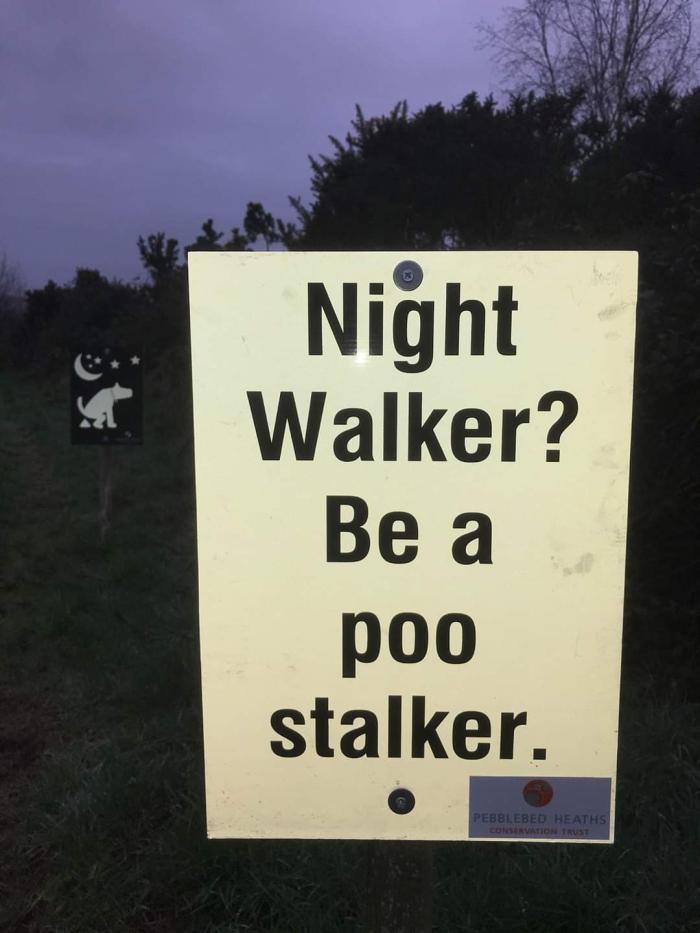
Our glow in the dark signs on the Pebblebed Heaths reminding dog walkers to pick up dog waste .
We also get our messages across using social media, pop up events, educational visits and talks to provide information in as many different visual and aural ways as possible.
And, at all three sites, we undertake walking patrols talking to people on site about why the signs are in place, what they mean and how to adapt behaviour to ensure that the key species and habitats in the nature reserves are not affected by people’s actions.